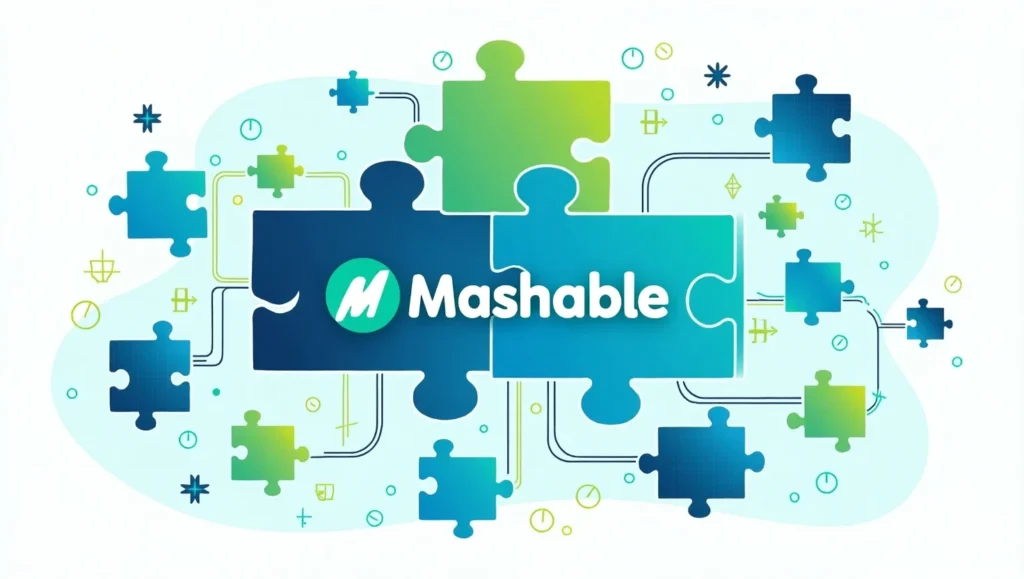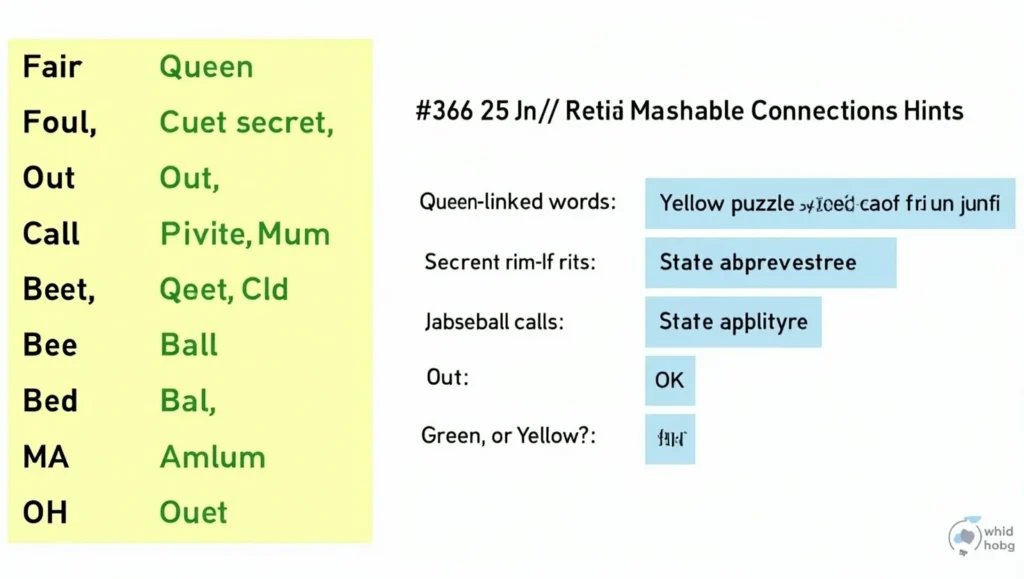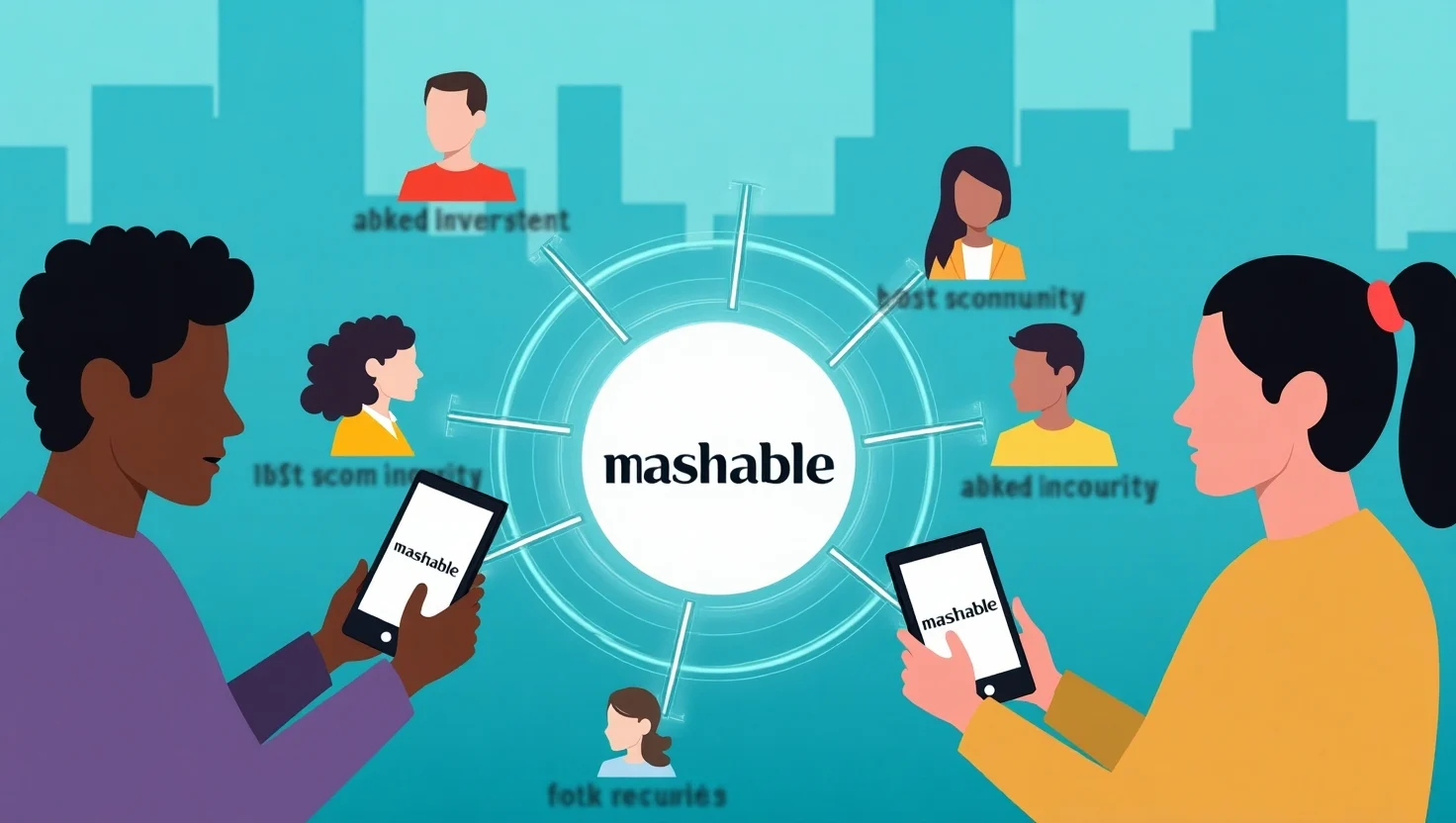Unlock the secrets behind Mashable Connections Today, the ultimate guide to mastering the NYT Connections puzzle.
You’ll learn smart strategies, explore pattern recognition and lateral thinking, and discover how Mashable’s hints truly elevate your game.
What Is Mashable Connections Today?

Discover how “Mashable Connections Today” covers NYT’s daily Connections puzzle.
Mashable doesn’t just share answers—they deliver strategic hints, explain semantic grouping, and keep readers coming back.
It’s a go-to resource for anyone looking to sharpen vocabulary and puzzle skills daily.
How the Connections Puzzle Works (Mechanics & Rules)
NYT’s Connections drops 16 words in a 4×4 grid. Your task: group them into four related categories. Each solved group reveals a color-coded difficulty level:
- 🟨 Yellow: Easiest
- 🟩 Green: Medium
- 🟦 Blue: Hard
- 🟪 Purple: Hardest
Each category type—prefixes, homophones, trivia, abstract concepts—demands familiarity with word associations, synonyms, antonyms, and compound words. NYT publishes new puzzles at 12:00 a.m. ET, and mistakes reset at four—that’s your maximum before answers get revealed.
Mashable’s Role in the Puzzle Ecosystem

Mashable delivers precise, well-chosen hints—not full spoilers. They let you keep the aha‑moment while gently nudging toward solutions.
Their walkthroughs clarify meanings, semantic connections, and typical traps.
People visiting Mashable range from casual solvers to streak addicts. Mashable stands out by providing context, not just answers.
Daily Puzzle Strategy: Techniques That Work
Pattern Recognition Tactics
Train your brain to pick up on linguistic signals:
- Watch for homophones, shared prefixes/suffixes,
- Spot compound words (e.g. “snow ball,” “sun rise”),
- Recognize parts of speech clusters.
Tactical Solving Methods
- Elimination method: discard unlikely groupings early.
- Identify red herrings—words that seem related but split across categories.
- Use cross‑referencing: once you find one duo, look for the other matching pair.
- Apply frequency analysis: some words like “RING” and “BALL” show up repeatedly in NYT puzzles
Cognitive & Linguistic Skills Involved
Connections puzzles train your mind across several areas:
- Vocabulary building through obscure or elevated terms.
- Semantic grouping based on synonyms, antonyms, or themes.
- Etymology and word structure reveal hidden connections.
- Lateral thinking helps you leap from literal to abstract associations.
- Memory and mental flexibility strengthen with daily play
Common Puzzle Themes by Category
| Category Type | Example Themes |
| Wordplay & Language | Homophones, idioms, compounds |
| Geography & Culture | U.S. postal codes, European capitals |
| Entertainment & Media | Books, songs, movies, characters |
| Daily Life | Tools, clothing, food items |
| Abstract & Sensory | Colors, emotions, materials |
Categories shift daily. Some days favor logical links or synonym sets, while others hinge on word origins or pop culture knowledge.
Real Examples from Recent Mashable Connections Hints

Mashable often teases each group without full spoiler:
- Example from July 25 (#775) puzzle words: Fair, Foul, Out, Ball, Secret, Quiet, Private, Mum, Bee, Bed, Mary, Mother, IN, MA, OH, OK
- Yellow: Queen-linked words (Bee, Bed, Mary, Mother)
- Green: State abbreviations (IN, MA, OH, OK)
- Blue: Baseball calls (Fair, Foul, Ball, Out)
- Green (or Yellow?): Quiet synonyms (Secret, Quiet, Private, Mum)
- Yellow: Queen-linked words (Bee, Bed, Mary, Mother)
Mashable hints steer you smoothly toward those answers without outright revealing them.
The Science of Red Herrings
Often, NYT inserts words that seem to belong together but actually span multiple groups—a psychological lure.
These red herrings rely on cognitive interference: your mind jumps to obvious pairings, only to be tricked by one missing term. Recognizing these requires mental discipline.
Puzzle Variations & Difficulty Trends
Puzzle difficulty varies:
- Holidays bring thematic twists (April Fools, emojis, etc.)
- Purple categories commonly exploit homophones, missing letters, or tricky suffix patterns.
- Month-to-month data shows homophones appear most frequently (~21 times in a year), and words like “BALL” show up often
How Players Personalize the Experience
People create rituals:
- Solving solo or with friends/family
- Tracking streaks in spreadsheets or apps
- Sharing results on social media (e.g. screen emojis)
- Some use Mashable hints only for the toughest group—Purple—to maintain challenge.
Related Puzzles & NYT Ecosystem
NYT Games also include Wordle, Spelling Bee, Quordle, Strands. Skills transfer:
- Crossword instincts help spotting synonym patterns
- Wordle experience supports wordplay detection
- Strands expands letter‑linking fluency
NYT subscription is required after the free trial to access full puzzle archives and experience.
Tools & Community Enhancements
- Official NYT Games app offers hint options, shuffle tools, and streak tracking.
- Third-party helpers (websites or extensions) generate hints without revealing full answers, often color‑coded and interactive
- Communities on Reddit, Discord, Mashable comment threads share insights and reveal patterns over time.
Educational Benefits & Cognitive Impact
Playing daily puzzles leads to:
- Better critical thinking, categorization, reading comprehension
- Boosted brain health—puzzle solvers show less cognitive decline in memory-related regions like hippocampus and cortex over 18 months
- Use in classrooms for vocabulary building in ESL or language arts settings
- Ideal brain training for aging adults keeping mental flexibility sharp
FAQs About Mashable Connections Today
| Question | Answer |
| When is the puzzle released? | 12:00 a.m. ET daily |
| Do I need a NYT subscription? | Yes, after the trial period |
| Are Mashable hints free? | Absolutely free and no signup required |
| Where to see official answers? | NYT Games site or through Mashable coverage |
| Is there a replay/archive feature? | Yes, NYT archive gives past puzzles for subscribers |
Why Mashable Connections Today Matters
This puzzle isn’t just a game. It’s a brain booster and cultural trendsetter rolled into one.
Mashable’s coverage blends strategic insight, linguistic utility, and community energy into a daily routine.
Whether you’re building language fluency or chasing streaks, Mashable hints help you connect smarter, not harder.
End with a conversational flourish:
Puzzle veterans often say: “Mashable hints feel like having a friend whisper, not shout.” These insights—sprinkled daily—offer clarity and delight.
So next time you open the NYT grid at midnight ET, lean into the semantic entities, pattern recognition, and lateral thinking.
Mashable Connections Today will help you solve smarter—and stay hooked.

Sapphire Drift is a passionate storyteller known for weaving imagination with emotion. With a unique voice and an eye for detail, she crafts narratives that linger long after the last page is turned. Her writing dives deep into the complexities of human emotions, relationships, and self-discovery.
She is the author of “Whispers Beneath the Moonlight”, a hauntingly beautiful tale of love and loss, “The Echoes of Her Silence”, a psychological drama that keeps readers at the edge of their seats, and the inspirational “Letters to My Future Self”, a soul-stirring collection of reflections and affirmations.




